6 x Buenos Aires Tetra: A Hardy and Lively Aquarium Classic Scientific Name: Hyphessobrycon anisitsi, Thriving Tropical Fish for Peaceful Community Tanks
£12.99 Original price was: £12.99.£10.65Current price is: £10.65.
Welcome these beautiful 6 x Buenos Aires Tetra, known scientifically as Hyphessobrycon anisitsi, into your aquarium. Their graceful movements and vibrant colors make them a stunning addition. Perfect for community tanks, they thrive in well-planted environments, enhancing your aquatic landscape.
991 in stock
Species Introduction
The Buenos Aires Tetra, scientifically known as Hyphessobrycon anisitsi, is a captivating freshwater fish that hails from the rivers and streams of South America, particularly in Argentina, Paraguay, and Brazil. This species is part of the Characidae family and is recognized for its vibrant coloration and lively nature, making it a popular choice among aquarists. Typically reaching a maximum length of around 4 cm (approximately 2 inches), these tetras are well-suited for both novice and experienced fish keepers. Their striking appearance, characterized by a silvery body with a hint of iridescence and a distinctive black stripe running from their dorsal fin to the base of their tail, adds a stunning visual element to any aquarium. Welcome these beautiful creatures into your aquatic community, and they will surely bring joy and liveliness to your tank.
Care Requirements Dashboard
Essential Care Guide for Your Buenos Aires Tetra
| Optimal Living Conditions | |
|---|---|
| Water Temperature | 24-27°C (75-81°F) |
| pH Level | 6.5-7.5 |
| Water Hardness | 4-12 dKH |
| Minimum Tank Size | 80L (20 gal) |
| Salinity | Freshwater |
| Care Level | Beginner Friendly |
Natural Behavior & Temperament
Buenos Aires Tetras are known for their lively and social nature. In their natural habitat, they are often found in schools, which provides them with a sense of security and enhances their overall well-being. These fish exhibit playful swimming patterns, darting around the tank and exploring their surroundings. Their social behavior makes them ideal candidates for community tanks, as they coexist peacefully with a variety of other species. However, it is essential to keep them in groups of at least six individuals to prevent stress and promote natural schooling behavior. When kept in appropriate numbers, Buenos Aires Tetras display vibrant colors and engage in active interactions with their tank mates, making them a delightful addition to any aquarium setup.
Tank Setup Guide
Creating an ideal environment for your Buenos Aires Tetras involves careful consideration of tank setup. These fish thrive in a well-planted aquarium with plenty of hiding spots and open swimming space. Use a substrate that mimics their natural habitat, such as fine gravel or sand, and incorporate live plants like Java Fern, Anubias, and Amazon Swords to provide shelter and enhance the aesthetic appeal of the tank. Additionally, driftwood and rocks can be strategically placed to create hiding spots and territories. Ensure that the tank is well-cycled before introducing your fish friends, as stable water conditions are crucial for their health. A gentle filtration system is recommended to maintain water quality without creating strong currents that may stress the fish. By providing a well-structured environment, you will encourage natural behaviors and promote the overall happiness of your Buenos Aires Tetras.
Water Quality Management
Maintaining optimal water quality is essential for the health and longevity of your Buenos Aires Tetras. Regular water testing is crucial to ensure that the pH, temperature, and hardness levels remain within the recommended ranges. The ideal pH for these fish is between 6.5 and 7.5, which can be monitored using aquarium test kits. Temperature fluctuations should be avoided, and a reliable heater can help maintain a stable environment within the range of 22 to 28 degrees Celsius (72 to 82 degrees Fahrenheit). Additionally, water hardness should be kept between 5 to 19 dGH. Performing regular water changes of 10-20% weekly will help remove toxins and replenish essential minerals, promoting a healthy aquatic environment. By prioritizing water quality management, you can ensure that your Buenos Aires Tetras thrive and exhibit their natural beauty.
Feeding & Nutrition
Feeding your Buenos Aires Tetras a balanced diet is vital for their health and vitality. These fish are omnivorous and will thrive on a varied diet that includes high-quality flake food, pellets, and occasional live or frozen foods such as brine shrimp, daphnia, and bloodworms. A feeding schedule of 2-3 small meals per day is recommended, ensuring that they consume all food within a few minutes to prevent water quality issues. It is essential to provide a mix of foods to meet their nutritional needs and enhance their coloration. Additionally, incorporating vegetable-based foods like spirulina flakes can contribute to their overall well-being. By offering a diverse diet, you can promote healthy growth and vibrant colors in your Buenos Aires Tetras.
Compatibility Guide
✓ Peaceful Community Fish
Compatible with: Neon Tetras, Guppies, Corydoras, Rasboras
Not compatible with: Aggressive species, larger predatory fish
Buenos Aires Tetras are generally peaceful and can coexist harmoniously with various community fish. Ideal tank mates include other small, non-aggressive species such as Neon Tetras, Guppies, Corydoras, and Rasboras. These fish share similar water parameter requirements and will create a vibrant and dynamic community tank. However, it is crucial to avoid keeping them with aggressive species or larger predatory fish, as this may lead to stress or injury. When introducing new fish to the tank, ensure that the existing members are not overly territorial to facilitate a smooth transition. By selecting compatible tank mates, you can create a thriving aquatic community that showcases the beauty of your Buenos Aires Tetras.
Health & Wellness
Maintaining the health and wellness of your Buenos Aires Tetras involves vigilance and proactive care. Common health issues include ich, fin rot, and swim bladder disease. Regular observation of your fish friends is essential to detect any signs of illness early. Symptoms such as lethargy, loss of appetite, or abnormal swimming behavior should be addressed promptly. To prevent diseases, ensure that the tank is well-maintained, with stable water parameters and a balanced diet. Quarantining new arrivals before introducing them to the main tank can also help prevent the spread of diseases. In case of illness, consult a reliable aquarium resource or a veterinarian specializing in fish care for appropriate treatment protocols. By prioritizing health and wellness, you can enjoy a vibrant and thriving aquarium.
Breeding Information
Breeding Buenos Aires Tetras can be a rewarding experience for aquarists. These fish are egg scatterers, meaning they do not exhibit parental care after spawning. To encourage breeding, it is recommended to set up a separate breeding tank with soft, slightly acidic water and plenty of fine-leaved plants where the eggs can be laid. The temperature should be slightly elevated to around 26-28 degrees Celsius (78-82 degrees Fahrenheit) to stimulate spawning. After the female lays eggs, it is crucial to remove the adults to prevent them from eating the eggs. The eggs typically hatch within 24-36 hours, and the fry will become free-swimming after a few days. At this stage, they can be fed infusoria or finely crushed flake food until they are large enough to consume regular fish food. By providing the right conditions and care, you can successfully breed Buenos Aires Tetras and witness the beauty of their life cycle.
Acclimation Process
Proper acclimation is crucial when introducing Buenos Aires Tetras to a new aquarium. To minimize stress and ensure a smooth transition, it is recommended to use the drip acclimation method. Start by floating the sealed bag containing the fish in the aquarium for about 15-20 minutes to equalize the temperature. After that, gradually introduce small amounts of aquarium water into the bag every 10-15 minutes for about an hour. This process helps the fish adjust to the water parameters of their new home. Once acclimated, gently release the fish into the tank using a net to avoid adding any transport water. It is essential to monitor the fish closely for the first few days to ensure they are adjusting well to their new environment. By following a careful acclimation process, you can help your Buenos Aires Tetras settle into their new home with ease.
Long-term Care
The long-term care of Buenos Aires Tetras involves ongoing attention to their habitat, diet, and health. These fish typically have a lifespan of 5-7 years when provided with optimal living conditions. Regular maintenance of the aquarium, including water changes and tank cleaning, is essential to prevent the buildup of harmful substances. Monitoring water parameters and adjusting them as needed will help ensure a stable environment. Additionally, maintaining a varied diet will promote healthy growth and vibrant coloration. As your Buenos Aires Tetras mature, continue to observe their behavior and health, addressing any issues that may arise promptly. By committing to long-term care, you can enjoy the beauty and companionship of these lively fish friends for many years.
Natural Habitat Recreation
Recreating the natural habitat of Buenos Aires Tetras in your aquarium can enhance their well-being and encourage natural behaviors. In the wild, these fish inhabit slow-moving waters with plenty of vegetation, submerged roots, and driftwood. To mimic this environment, incorporate live plants, such as Vallisneria and Cryptocoryne, along with natural decorations like driftwood and rocks. The use of a dark substrate can also help to replicate the riverbed and enhance the colors of your fish. Additionally, providing shaded areas and open swimming spaces allows Buenos Aires Tetras to feel secure while still having room to explore. By creating a biotope that reflects their natural habitat, you can promote the health and happiness of your Buenos Aires Tetras.
Seasonal Care Adjustments
As seasons change, it is important to adjust the care routine for your Buenos Aires Tetras to ensure their continued health and happiness. During the warmer months, monitor the water temperature closely, as higher temperatures can lead to stress and decreased oxygen levels. Ensure that the aquarium is well-aerated and consider using a fan or chiller if necessary. Conversely, in colder months, maintain a stable temperature by using a reliable heater and avoiding drafts. Additionally, adjusting the lighting duration can help simulate natural seasonal changes, promoting healthy growth and behavior. By being attentive to seasonal variations, you can provide the best possible care for your Buenos Aires Tetras throughout the year.
Expert Tips
For those looking to provide the best care for their Buenos Aires Tetras, consider the following expert tips. First, always quarantine new fish before introducing them to your main tank to prevent the spread of diseases. Second, maintain a consistent feeding schedule and vary their diet to promote optimal health. Third, regularly check for signs of stress or illness, as early detection is key to successful treatment. Lastly, engage with your fish friends by observing their behavior and interactions, as this can enhance your overall aquarium experience. By following these expert tips, you can ensure that your Buenos Aires Tetras thrive and flourish in their aquatic home.
Troubleshooting
Despite your best efforts, you may encounter challenges while caring for your Buenos Aires Tetras. Common issues include stress from aggressive tank mates, poor water quality, or inappropriate tank conditions. If you notice signs of stress, such as hiding or abnormal swimming patterns, evaluate the tank environment and consider rehoming aggressive species. If water quality issues arise, conduct a water test and perform necessary changes to restore balance. Additionally, ensure that the tank is not overcrowded, as this can lead to increased stress and health problems. By being proactive and addressing issues promptly, you can maintain a healthy and thriving environment for your Buenos Aires Tetras.
Scientific Background
The Buenos Aires Tetra belongs to the Characidae family, which encompasses a diverse group of freshwater fish. Their scientific classification places them within the order Characiformes, which is known for its variety of small, colorful fish commonly found in freshwater habitats. Research on Buenos Aires Tetras has highlighted their adaptability and resilience, making them a favored choice for aquarists. Conservation efforts are essential to protect their natural habitats from pollution and habitat destruction. By understanding their scientific background, aquarists can appreciate the ecological importance of Buenos Aires Tetras and contribute to their conservation.
Advanced Care Techniques
For those looking to elevate their care for Buenos Aires Tetras, advanced techniques can enhance their living conditions. Consider implementing a planted tank with a variety of aquatic plants to provide natural filtration and improve water quality. Additionally, utilizing a CO2 injection system can promote healthy plant growth, benefiting both the plants and the fish. Regularly rotating tank decorations can stimulate the fish’s curiosity and encourage natural behaviors. Furthermore, exploring breeding techniques can deepen your understanding of these fish and contribute to their population. By adopting advanced care techniques, you can create a thriving ecosystem for your Buenos Aires Tetras.
Water Quality Parameters
Optimal Range
24-27°C
6.5-7.5
0 ppm
Caution Zone
22-24°C or 27-29°C
6.0-6.5 or 7.5-8.0
0.25-0.5 ppm
Danger Zone
<22°C or >29°C
<6.0 or >8.0
>0.5 ppm
Monitoring Tip: Test water parameters weekly and perform regular water changes to maintain optimal conditions for your aquatic friends!
Frequently Asked Questions
Q: What tank size is required for Buenos Aires Tetra?
Buenos Aires Tetras thrive in a minimum tank size of 100 litres. This allows ample swimming space and promotes a healthy environment. A larger tank can help maintain stable water parameters and reduce stress among your fish friends. These active swimmers enjoy being in groups, so consider keeping at least six individuals to exhibit their natural behaviour. Ensure the tank includes hiding spaces and swimming areas, such as plants and decorations, to mimic their natural habitat, which consists of slow-moving waters in South America.
✓ Expert Tip
Consider using a larger tank if you plan to introduce other species, as a well-planned community tank can enhance the overall beauty and dynamics of your aquarium.
Q: What water parameters do Buenos Aires Tetra require?
Buenos Aires Tetras prefer slightly acidic to neutral water, with a pH range of 6.0 to 7.5. The water hardness should be between 5 to 20 dGH. Maintaining a stable temperature between 22°C to 28°C is crucial for their wellbeing. Regular water changes of 10-15% weekly are recommended to keep water quality high, as these fish are sensitive to poor conditions. Use a reliable water testing kit to monitor these parameters closely to ensure a healthy environment for your aquatic companions.
✓ Expert Tip
Utilising a good quality filter can help maintain water clarity and quality, but ensure the flow is gentle, as Buenos Aires Tetras prefer calm waters.
Q: How often should I feed Buenos Aires Tetra?
Feeding Buenos Aires Tetras should be done two to three times a day, providing them with as much food as they can consume within 2-3 minutes. A varied diet is essential for their health, including high-quality flake food, frozen or live food such as brine shrimp or bloodworms. This not only ensures they receive adequate nutrition but also supports their vibrant colours and active behaviour. Overfeeding can lead to water quality issues, so it’s important to monitor their intake closely.
✓ Expert Tip
Consider using a feeding ring to prevent food from dispersing too quickly, ensuring all fish get their share and reducing waste in the tank.
Q: What are the best tank mates for Buenos Aires Tetra?
Buenos Aires Tetras are generally peaceful and do well in community tanks with similarly sized fish. Ideal tank mates include other Tetras, Rasboras, and peaceful cichlids. Avoid keeping them with aggressive species that may nip at their fins or compete for food. It is vital to ensure that all tank mates share similar water parameter preferences and temperaments to maintain harmony within the aquarium. When introducing new fish, do so gradually to prevent stress and territorial disputes.
✓ Expert Tip
Creating a well-planted tank can help reduce aggression and provide hiding spaces, making it easier for fish to establish their territories.
Q: How do I properly acclimatise Buenos Aires Tetra to my aquarium?
Acclimatisation is crucial to reduce stress and ensure the health of your Buenos Aires Tetras. Start by floating the sealed bag in your aquarium for 15-20 minutes to equalise the temperature. After this, open the bag and gradually add small amounts of aquarium water to the bag every 5-10 minutes for approximately an hour. This helps the fish adjust to the water parameters. Finally, gently release the fish into the tank using a net to avoid introducing any transport water.
✓ Expert Tip
Avoid adding the transport water into your aquarium, as it may contain harmful substances or parasites.
Q: What are the signs of healthy Buenos Aires Tetra?
Healthy Buenos Aires Tetras exhibit vibrant colours, active swimming behaviour, and a good appetite. Their fins should be intact and not frayed, and they should show no signs of distress or hiding excessively. Regularly observing your fish can help you identify any changes in behaviour or appearance that may indicate health issues. If you notice any lethargy, loss of colour, or unusual swimming patterns, it may be a sign of stress or illness, requiring immediate attention.
✓ Expert Tip
Maintaining a stable environment with appropriate water parameters is key to keeping your fish healthy and vibrant.
Q: How do I successfully breed Buenos Aires Tetra?
Breeding Buenos Aires Tetras requires a separate breeding tank with soft, slightly acidic water. Provide fine-leaved plants or spawning mops for the fish to lay eggs. Ensure the breeding tank is well-filtered but with a gentle flow. Once the females are ready, they will scatter eggs on the plants. After spawning, remove the parents to prevent them from eating the eggs. The eggs will hatch in 24-36 hours, and the fry should be fed infusoria or finely crushed flake food until they are large enough to take standard food.
✓ Expert Tip
Maintaining optimal water conditions during breeding is crucial to ensure a higher survival rate for the fry.
Q: What temperature should I maintain for Buenos Aires Tetra?
The ideal temperature range for Buenos Aires Tetras is between 22°C to 28°C. Maintaining a stable temperature is crucial, as fluctuations can stress your fish. A reliable aquarium heater can help achieve and maintain this temperature range. Regularly monitor the temperature with a good quality thermometer, especially during seasonal changes, to ensure your aquatic companions remain comfortable and healthy.
✓ Expert Tip
Position the heater near a water flow source to ensure even temperature distribution throughout the tank.
Q: How long do Buenos Aires Tetra typically live in captivity?
In captivity, Buenos Aires Tetras can live for approximately 5 to 8 years with proper care. Providing a suitable environment, maintaining water quality, and a balanced diet are essential for their longevity. Regular health checks and prompt attention to any signs of illness can also contribute to a longer, healthier life. Establishing a well-maintained aquarium will help ensure your fish friends thrive for many years.
✓ Expert Tip
Regular water changes and a varied diet are key factors in promoting a healthy lifespan for your Buenos Aires Tetras.
Q: What type of substrate is most suitable for Buenos Aires Tetra?
Buenos Aires Tetras prefer a soft, sandy substrate that mimics their natural environment. A fine substrate allows them to forage naturally and reduces the risk of injury to their delicate fins. You may also include some smooth pebbles or larger grains to create a more natural look. Avoid sharp or abrasive substrates as they can harm your fish. Incorporating live plants can also enhance the habitat, providing both shelter and a natural food source.
✓ Expert Tip
Using a substrate vacuum during water changes can help keep your tank clean without disturbing the fish.
Q: What behavioural patterns should I expect from Buenos Aires Tetra?
Buenos Aires Tetras are known for their lively and social nature. They are active swimmers, often seen schooling together, which is a behaviour that not only promotes their wellbeing but also provides an engaging display in your aquarium. They may exhibit occasional bursts of speed or playfulness, especially during feeding times. It’s important to provide ample swimming space and hiding spots, as this helps reduce stress and allows them to display their natural behaviours.
✓ Expert Tip
Observing their behaviour can also help you detect any potential issues or stressors in the aquarium environment.
Q: How can I prevent common diseases in Buenos Aires Tetra?
Preventing common diseases in Buenos Aires Tetras primarily involves maintaining high water quality and a stable environment. Regular water changes, proper filtration, and avoiding overcrowding are essential practices. Quarantining new fish before introducing them to your main tank can prevent the spread of diseases. Additionally, providing a varied diet rich in nutrients supports their immune system, making them less susceptible to illness. Monitoring your fish regularly for any signs of stress or disease can help catch issues early.
✓ Expert Tip
Consider using aquarium salt in moderation to help prevent certain diseases, but consult with an expert before use to ensure it is suitable for your tank.
Q: What lighting conditions do Buenos Aires Tetra prefer?
Buenos Aires Tetras thrive in moderate lighting conditions that mimic their natural habitat. Soft, filtered light is preferable to avoid stressing them, as they are accustomed to the dappled light found in their native waters. Using LED lights with a timer can help maintain a consistent light cycle, which is beneficial for both the fish and any live plants you may have. Additionally, providing shaded areas using plants or decorations can help create a more comfortable environment for your fish.
✓ Expert Tip
Regularly monitor the light intensity to ensure it is not too harsh, as this can lead to stress and affect the health of your aquatic companions.
Q: How do I recognise stress in Buenos Aires Tetra?
Recognising stress in Buenos Aires Tetras can be crucial for their health. Signs of stress may include erratic swimming, hiding excessively, or clamped fins. Additionally, they may lose colour or become less active. Environmental factors such as poor water quality, inappropriate tank mates, or sudden changes in temperature can contribute to their stress levels. Regular observation of their behaviour can help you identify any changes early and take necessary actions to rectify the situation.
✓ Expert Tip
Creating a stable environment and providing plenty of hiding spots can significantly reduce stress for your fish friends.
Q: What natural habitat conditions should I replicate for Buenos Aires Tetra?
To create a suitable habitat for Buenos Aires Tetras, replicate the slow-moving waters of their natural environment. Incorporate soft, sandy substrates along with live plants for cover and foraging opportunities. Provide driftwood and rocks to create hiding spots and break up the line of sight, which can reduce stress. Maintaining slightly acidic to neutral water with moderate lighting will help them feel at home. Regular water changes are also essential to keep the environment healthy and vibrant.
✓ Expert Tip
Utilising natural materials such as rocks and driftwood can enhance the aesthetics of your aquarium while providing essential shelter for your fish.


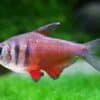
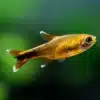
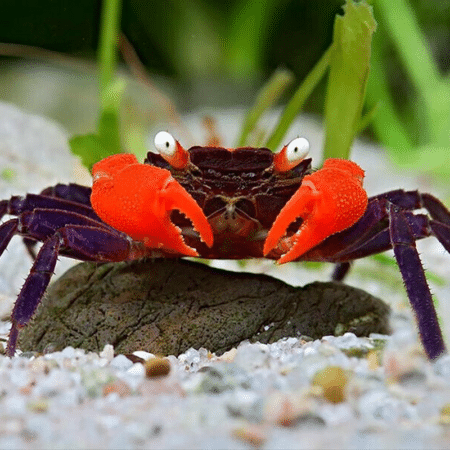
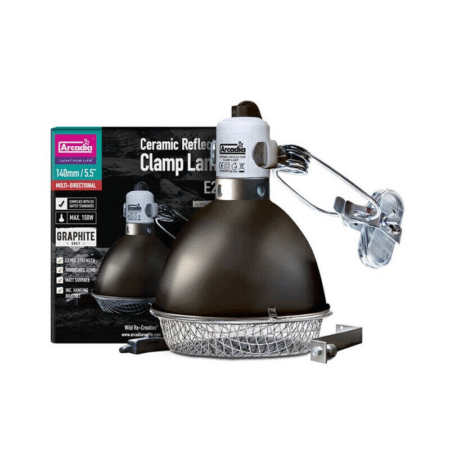




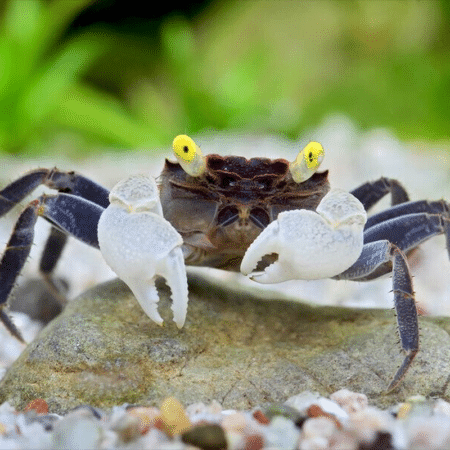



Emily Carter (verified owner) –
I recently added six Buenos Aires Tetras to my aquarium, and I couldn’t be happier! These little guys are not only beautiful, with their shimmering silver bodies and vibrant orange tips, but they are also incredibly lively and hardy. After two weeks, they have adjusted wonderfully, swimming in schools and showing off their playful nature.
What impressed me the most is how they thrive in various water conditions; this makes them a great choice for both beginners and experienced hobbyists. I’ve kept neon tetras in the past, but I find the Buenos Aires Tetras to be more active and engaging. They really brighten up the tank and have a delightful personality.
One minor point to note is that they can be a bit nippy with smaller tank mates, so I recommend keeping them with similarly sized fish. Overall, these tetras have added so much joy to my aquarium, and I highly recommend them to anyone looking to enhance their tropical fish collection. Whether you’re just starting out or a seasoned aquarist, these fish are a fantastic addition!